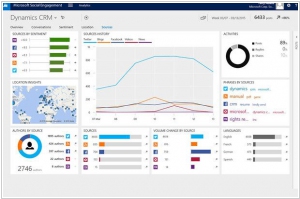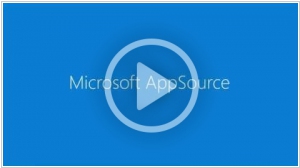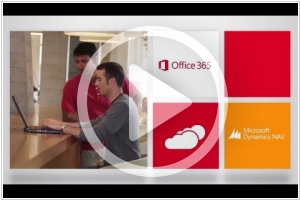Microsoft Dynamics 365 vs Oracle ERP
November 12, 2023 | Author: Michael Stromann
14
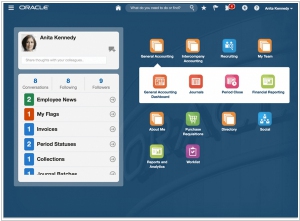
Oracle Enterprise Resource Planning (ERP) Cloud is a suite of cloud applications for finance, project management, procurement, risk management, and other core day-to-day activities important in every business, regardless of size, industry, or geography. Designed from the ground-up with a modern architecture and technology, Oracle ERP Cloud is natively connected with all Oracle enterprise cloud applications and scales inherently to support added users, transactions, and sites as your business grows by size and into new markets across your country or the globe.
Microsoft Dynamics 365 and Oracle ERP are two prominent enterprise resource planning (ERP) solutions that cater to the needs of organizations of varying sizes and industries.
Microsoft Dynamics 365 offers a comprehensive suite of integrated applications that cover a wide range of business processes, including sales, customer service, marketing, finance, operations, and human resources. It provides organizations with a unified platform that combines ERP and customer relationship management (CRM) functionalities. Dynamics 365 offers flexibility and scalability, with cloud-based deployment options and robust integration capabilities with other Microsoft tools and services.
Oracle ERP, developed by Oracle Corporation, provides a comprehensive suite of applications that span various domains, such as finance, supply chain management, manufacturing, human resources, and customer experience. It offers industry-specific solutions and caters to the needs of large enterprises with complex operations. Oracle ERP provides extensive customization options, deep integration capabilities, and robust security features, making it suitable for organizations that require a highly configurable and scalable solution.
See also: Top 10 Online ERP software
Microsoft Dynamics 365 offers a comprehensive suite of integrated applications that cover a wide range of business processes, including sales, customer service, marketing, finance, operations, and human resources. It provides organizations with a unified platform that combines ERP and customer relationship management (CRM) functionalities. Dynamics 365 offers flexibility and scalability, with cloud-based deployment options and robust integration capabilities with other Microsoft tools and services.
Oracle ERP, developed by Oracle Corporation, provides a comprehensive suite of applications that span various domains, such as finance, supply chain management, manufacturing, human resources, and customer experience. It offers industry-specific solutions and caters to the needs of large enterprises with complex operations. Oracle ERP provides extensive customization options, deep integration capabilities, and robust security features, making it suitable for organizations that require a highly configurable and scalable solution.
See also: Top 10 Online ERP software
Microsoft Dynamics 365 vs Oracle ERP in our news:
2023. Microsoft brings an AI-powered Copilot to Dynamics 365
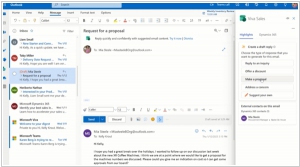
Microsoft is introducing a new AI tool called Copilot, which aims to automate repetitive tasks in sales and customer service. In applications such as Dynamics 365 Sales and Viva Sales, Copilot can assist in composing email responses to customers and generate an email summary of Teams meetings in Outlook. The meeting summary incorporates information from the seller's CRM, including product details and pricing, and combines them with insights gathered during the recorded Teams call. In Dynamics 365 Customer Service, Copilot can draft "contextual answers" for customer queries in chat or email formats. It also provides an interactive chat experience for customer service agents, drawing from knowledge bases and case history. Additionally, Microsoft's AI Builder tool features a new "GPT" model that enables organizations to integrate text-generation capabilities into their Power Automate and Power Apps solutions, complementing the conversation boosters provided by Copilot.
2021. Microsoft announces new tools to modernize supply chain and manufacturing
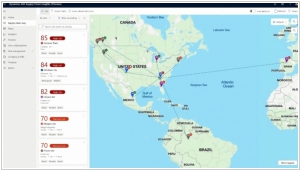
Microsoft is introducing the Microsoft Cloud for Manufacturing, a new solution tailored for the manufacturing industry. Additionally, they are launching Dynamics 365 Supply Chain Insights, a tool that enhances supply chain visibility and provides intelligence to address issues proactively. The manufacturing cloud aims to gather signals and alert manufacturers about potential supply shortages, while the Supply Chain Insights tool helps identify and resolve issues along the supply chain before they become bottlenecks. Together, these solutions enhance agility and flexibility for manufacturing companies.
2020. Microsoft introduced its customer data platform inside Dynamics 365
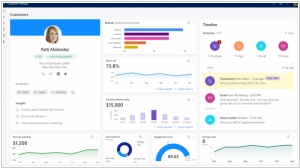
Microsoft has made a significant announcement regarding its Dynamics 365 product line, in response to the growing volume of enterprise data and the need to collect and analyze it effectively to enhance customer experiences. The company is introducing new features to its customer data platform (CDP), a concept that has gained traction among major vendors and a growing number of startups. The CDP consolidates customer data from various systems into a single location, simplifying the understanding of customer interactions. The ultimate objective is to leverage this knowledge to deliver enhanced customer experiences. Microsoft's CDP is known as Customer Insights. It is important to note that Microsoft is not the only player in this domain. Other prominent companies like Adobe, Salesforce, and SAP offer similar products for similar reasons, as part of their marketing toolsets.
2018. Microsoft launches new AI applications for Dynamics 365 CRM
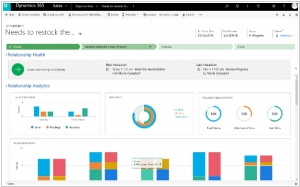
A year ago, Microsoft made its debut in the field of AI solutions with its first offering in the Dynamics 365 portfolio. Today, Microsoft is expanding this portfolio by introducing three new products: Dynamics 365 AI for Sales, Customer Service, and Market Insights. Dynamics 365 AI for Sales is designed to empower sales teams by providing them with deeper insights into their prospects through sentiment analysis. While sentiment analysis may be considered a fundamental application of machine learning, AI for Sales goes beyond by assisting salespeople in determining the appropriate actions to take and prioritizing prospects effectively. Similarly, the Customer Service application employs natural language understanding to comprehend and predict customer service issues, leveraging virtual agents to reduce costs. Lastly, Dynamics 365 AI for Market Insights fulfills its name by equipping teams with valuable data on social sentiment, but it goes a step further by offering more comprehensive insights.
2017. Microsoft integrated LinkedIn with Dynamics 365

Microsoft has unveiled significant integrations between its acquired professional social network, LinkedIn, and Microsoft Dynamics 365, the company's comprehensive CRM and ERP suite. These integrations bring forth several noteworthy enhancements. Firstly, Microsoft is bridging the gap between Dynamics 365 and the LinkedIn Sales Navigator tool, enabling sales professionals to leverage LinkedIn's extensive database of 500 million users. This integration empowers sales teams with valuable insights and connections to enhance their customer engagement strategies. Furthermore, Microsoft is introducing a specialized tool within Dynamics 365 for HR professionals, known as Dynamics 365 for Talent. This tool enables users of Dynamics 365 ERP to seamlessly access LinkedIn's Recruiter and Learning solutions. HR professionals can now conveniently search for new talent directly from LinkedIn and effectively manage employees throughout their entire journey with the company, from recruitment to ongoing development and engagement. By merging the power of LinkedIn and Microsoft Dynamics 365, Microsoft aims to provide enhanced capabilities for sales teams and HR professionals, fostering improved customer relationship management and talent acquisition processes. These integrations signify Microsoft's commitment to delivering comprehensive solutions that streamline business operations and leverage the vast potential of professional networking platforms.
2016. Microsoft Dynamics 365 became generally available
Microsoft has officially launched Dynamics 365, a comprehensive cloud solution that combines its ERP and CRM functionalities, positioning itself as a direct competitor to Salesforce. With pricing starting at $70 per user per month, Dynamics 365 offers a web interface as well as a mobile app and can also be seamlessly integrated within the familiar Outlook applications. In this release, Microsoft has incorporated intelligent features specifically designed for sales and service professionals. The first is Customer Insights, an independent cloud service that enables users to aggregate diverse internal and external data sources, including platforms like Facebook and Trip Advisor. The second feature, Relationship Insights, equips salespeople with real-time information about the state of their customer relationships. Powered by the Cortana Intelligence Suite, which Microsoft introduced in 2015, Relationship Insights utilizes tools such as sentiment analysis to assess the likelihood of closing a deal and determine the best course of action. Microsoft has taken steps to consolidate its artificial intelligence tools into a cohesive division, aligning with the industry trend of integrating intelligence into various product offerings, extending beyond CRM vendors alone.
2016. Microsoft to merge CRM and ERP into integrated cloud platform Dynamics 365
Microsoft has unveiled its plans to integrate the Dynamics CRM and ERP products into a cohesive platform called Dynamics 365. This integrated platform aims to provide a foundation for third-party developers to build applications. Dynamics 365 will be closely connected to the cloud office suite, Cortana voice intelligence, and PowerBI data visualization. To simplify this comprehensive system, Microsoft is offering individual applications that sit atop the platform. These include finance, field service, sales, operations, marketing, project service automation, and customer service applications. Furthermore, Microsoft has introduced Microsoft AppSource, an app store where developers can create and distribute their own applications, offering a comprehensive solution. The store will initially feature over 200 apps developed by early adopters.
2016. MS Dynamics CRM update targets IoT

Microsoft has introduced the Spring 2016 Wave update for its Dynamics CRM, which plays a vital role in the company's digital transformation strategy. This latest version of Dynamics CRM aims to deliver personalized, proactive, and predictive customer experiences. Notably, the update acknowledges the significance of the Internet of Things (IoT) by introducing Connected Field Service, a preview offering that seamlessly integrates IoT capabilities into field service operations. Connected Field Service empowers enterprises to monitor IoT-connected devices, identify anomalies, and generate alerts that trigger automated responses to address potential issues or risks. By leveraging this technology, businesses can efficiently match the availability and proximity of skilled service technicians equipped with the necessary tools to customer locations, enabling them to take preventive action when required.
2015. Microsoft Dynamics CRM 2016 - the most comprehensive upgrade ever

Microsoft is touting the upcoming release of its Dynamics CRM 2016 (scheduled for Q4) as the most extensive upgrade to date. The product has undergone a complete redesign, with significant enhancements made to both the on-premises and cloud versions. The forthcoming version highlights four key areas: productivity, mobility, intelligence, and customer service. In addition, Microsoft announced CRM for Outlook, which seamlessly integrates with the Microsoft email platform—where many salespeople spend their workdays. It's important to note that although this is a significant release announcement, the company has been continuously updating the cloud version of the product. This announcement represents the culmination of those efforts, while on-premises users will experience these updates for the first time.
2014. Microsoft quietly launches Dynamics NAV ERP apps for iPad, Android, Windows 8
Microsoft's Dynamics team has released client apps for iPad, Android, and Windows 8.x, specifically designed for Dynamics NAV. These new client apps are available for free but require Microsoft's Dynamics NAV ERP to be installed on the backend. The available features in the client apps vary depending on the version of the Dynamics NAV server apps being used. Microsoft has set its sights on launching the latest major release, Dynamics NAV 2015, before the end of this year. Dynamics NAV, one of Microsoft's four ERP apps, primarily targets small business users. Earlier this year, the Dynamics AX team also introduced a touch-first Modern/Metro-Style shop-floor control app for Windows 8.

